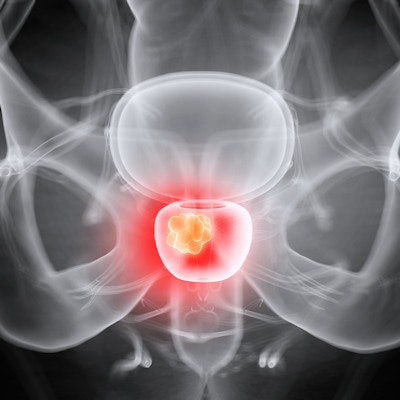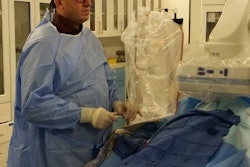
Minimally invasive prostate artery embolization (PAE) is an effective long-term treatment for men with enlarged prostate glands, according to researchers at a February 28 news conference held by the Society of Interventional Radiology (SIR).
A group led by Dr. Shivank Bhatia of the University of Miami Miller School of Medicine found that patients reported significant relief over six years after the procedure from lower urinary tract symptoms or urinary retention due to what's known as benign prostate hyperplasia (BPH). The findings are from the largest long-term study in North American and included 1,000 patients.
"Of 18 million men in the U.S. eligible for BPH treatment, many avoid all treatments because of the widely known risks of surgery, particularly sexual side effects and leakage," Bhatia said, in a media briefing held ahead of SIR's 2023 annual meeting. "PAE avoids these risks while achieving long-term positive clinical outcomes."
BPH is the most common benign condition in men, affecting more than 50% of men over the age of 60. The prostate gland enlarges with age, putting pressure on the urethra, which carries urine from the bladder. This causes urinary urgency, increased frequency, inconsistency of flow, straining to urinate, and the inability to completely empty the bladder.
In PAE, interventional radiologists inject small amounts of chemicals into the arteries that feed the prostate gland. The chemicals reduce the blood supply to the prostate, thereby shrinking it. PAE was introduced 10 years ago and has an established safety profile, yet most men are unaware of the treatment option, Bhatia added.
In the study, the researchers enrolled 1,000 patients for PAE for either BPH with lower urinary tract symptoms or urinary retention from January 2014 to September 2022. The mean patient age was 70.2 and mean prostate volume was 107.2 grams. Follow-up evaluations took place at 6-12, 24, 60, and 72 months after the procedure.
Participants reported improvements based on a 35-point International Prostate Symptom Score (IPSS), which ranks symptoms as mild, moderate, or severe. Before the procedure, patients reported a mean score of 23 in the "severe" range.
According to the findings, in less than three months, patients achieved a score of six ("mild" symptoms), and these improvements lasted throughout the six-year study. Specifically, at five years post PAE, median IPSS was three and patients' mean prostate size was 69.3 grams.
PAE did not negatively impact sexual function and no incidence of leakage was reported after PAE, the researchers found.
Moreover, study participants were also asked a quality-of-life question: "If you were to spend the rest of your life with your urinary condition just the way it is now, how would you feel about that?" Before the PAE, the mean score was five ("mostly dissatisfied"), but within a year, the score was one ("mostly satisfied"), the researchers reported.
"Our study shows that PAE is a highly effective treatment whose long-term outcomes include sustained LUTS relief and significant improvement in quality of life," Bhatia said.
Ultimately, Bhatia encouraged patients to learn about all options for enlarged prostate symptoms, talk to various physicians, and then decide what's best for them.
"One size does not fit all when it comes to treating BPH, and PAE remains a very attractive alternative for patients with larger glands and in setting of acute urinary retention," he concluded.
The study will be presented at the SIR annual scientific meeting, which kicks off March 4 in Phoenix, AZ.




















